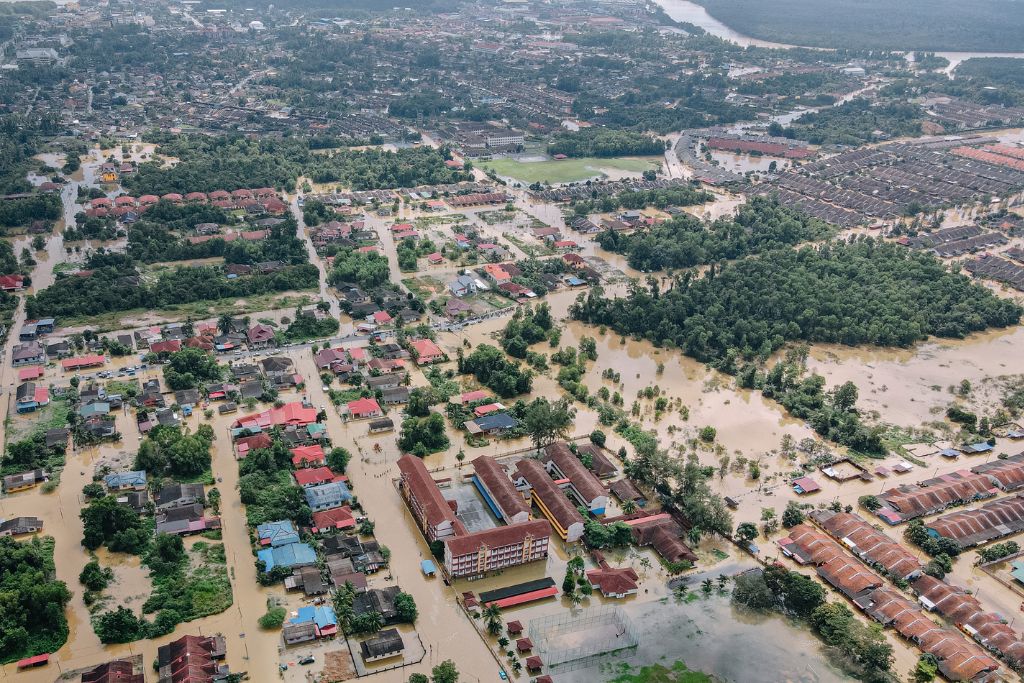Flooding is one of the world’s most costly and dangerous natural disasters. Floods negatively impact people, communities, property, and the environment every year. The planet has experienced increasingly frequent and severe floods over the past several decades due to climate change. With this trend continuing to climb, flooding will increase the costs of damage and recovery efforts. Here are some of the negative impacts of flooding on the planet.
—
Floods occur when there’s a large amount of water in an area, usually due to heavy rain or melting snow. They are more likely to happen during the spring and summer when temperatures are warmer and there’s more precipitation.
There are several reasons why flooding frequencies have increased over time:
- Global warming: Global warming increases the likelihood of extreme weather events like hurricanes and tropical storms. These events cause flooding by bringing larger amounts of rain or snowfall at once.
- Population growth: More people means more roads, homes, businesses, and other structures built near rivers or other bodies of water. Construction often leads to erosion. If there’s an extreme weather event like a hurricane or tropical storm, the increased development will weaken the land and lead to more severe damage than before.
- Land use changes: Land use changes such as deforestation can increase runoff from rainstorms, leading to increased flooding risk.
4 Negative Impacts of Flooding
1. Floods Harms Wildlife
Wild animals are particularly vulnerable to flooding. They may find themselves trapped in an area that is too difficult to escape, or they may need access to areas rich in food sources. Flooding also impacts wildlife by forcing them to abandon their homes, destroying eggs and younger animals in the process.
In addition to these direct effects, flooding can be devastating in long-term ways. For example, floods often result in habitat destruction in forests and wetlands. Beginning in 2019, parts of Herefordshire England were flooded, causing damage that would take decades for some affected ecosystems to recover.
2. Floods Represent a Risk to People and Communities
Floods can also be devastating for communities living in affected areas. They damage homes and businesses as well as the very fabric of a community, forcing people to evacuate. As a result, many people are without a place to live for long periods and must rely on government assistance for food and shelter.
During last year’s monsoon season flooding in Pakistan, almost 1,700 people lost their lives and nearly two million homes were destroyed. Worsening flood seasons will only cause an increase in the devastating impact on communities in the future.
Flooding also has long-term impacts on people’s lives. It disrupts local economies as businesses close or relocate due to water damage or lack of power. Additionally, some flood victims may never return to their homes or businesses due to the extent of the damage. This displacement will ultimately lead to climate migration, which may displace over 1.2 billion people by 2050 and lead to a global migrant crisis in the coming years.
3. Floods Lead to Erosion and Sedimentation
Erosion is the process of the Earth’s surface breaking down or wearing away due to contact with wind, water, or ice. Sedimentation occurs when sediments deposit into a particular place they don’t belong. Flooding causes both these processes to occur in large amounts at once.
Erosion and sedimentation destroy vegetation and prevent plant growth because of insufficient nutrients.
Eroded materials can also end up in rivers, lakes, and oceans, affecting water quality and aquatic life. These often clog streams, inhibiting fish migration and reproduction.
Sedimentation reduces water flow downstream and limits habitat availability for aquatic organisms. Erosion and sedimentation can also cause harmful algal blooms, which kill fish populations and cause illnesses in people who eat them.
4. It Spreads Diseases and Contamination
Flooding is a common way for diseases and contamination to spread. When a flood hits, sewage overflows into nearby rivers, lakes, and drinking water sources. This leads to water supply contamination, which can be especially dangerous for those with compromised immune systems and other health conditions.
Water supply contamination leads to bacteria growth, such as E. coli, salmonella, and cholera. These can be fatal, especially if someone doesn’t seek treatment in time.
Flooding can contaminate food supplies through agricultural runoff or farming equipment used during cleanup efforts. It may also contain high levels of pathogens like feceal matter, which can spread through the air into homes. Residents with poor ventilation systems may breathe this air regularly and experience illness.
You might also like: The Link Between Climate Change and Disease Outbreaks
How to Protect Yourself From Floods
Flooding is a major concern in the US, so it’s important to know how to prevent severe damage. If you live near a flood-prone area, make sure to protect your home with waterproofing techniques such as:
- Using rubber sealant around windows and doors
- Installing a sump pump in your basement will automatically drain water from your house.
- Installing a drainage system in your yard that drains stormwater away from your home
Make sure to waterproof your basement or crawl spaces and seal any holes. Build up the ground around the perimeter of your home so water cannot pool up against it.
Flooding is a natural disaster that can be devastating and have a lasting impact on a community. The aftermath of a flood is often messy and chaotic, so it’s important to stay safe. The best way to avoid these negative impacts is to prepare for a flood before it happens.
You might also like: Flooding Will Hit Asia the Hardest: Report


















